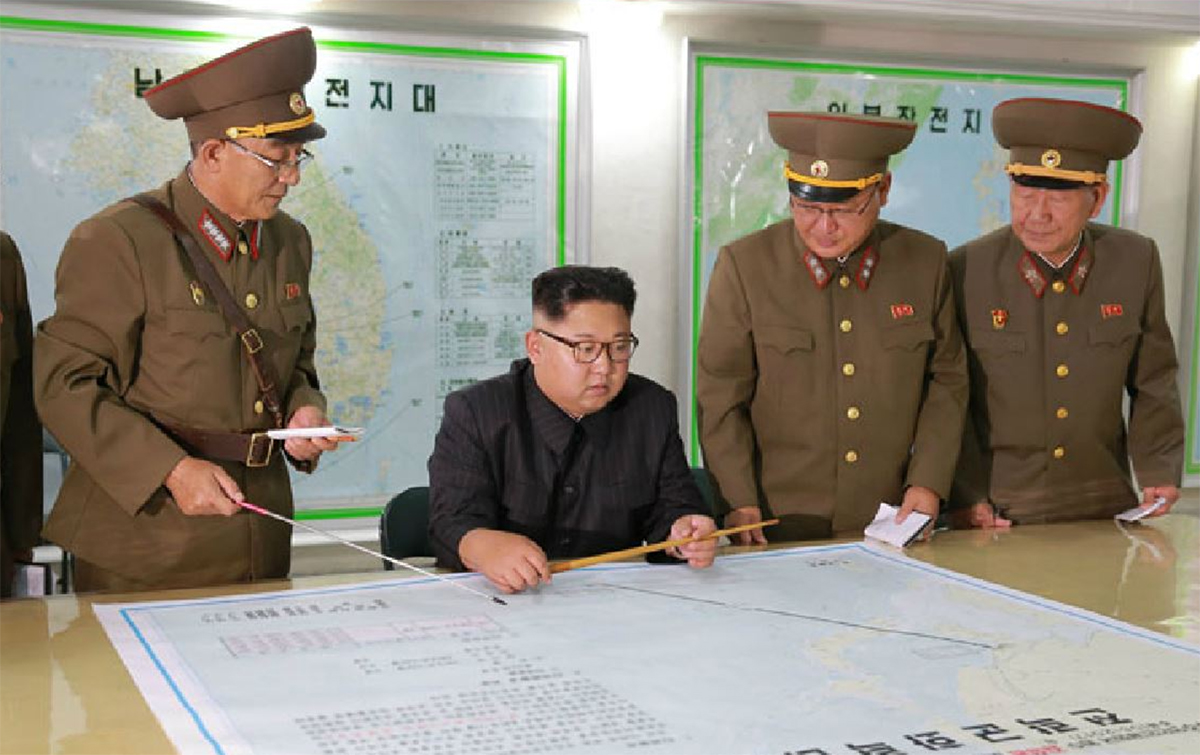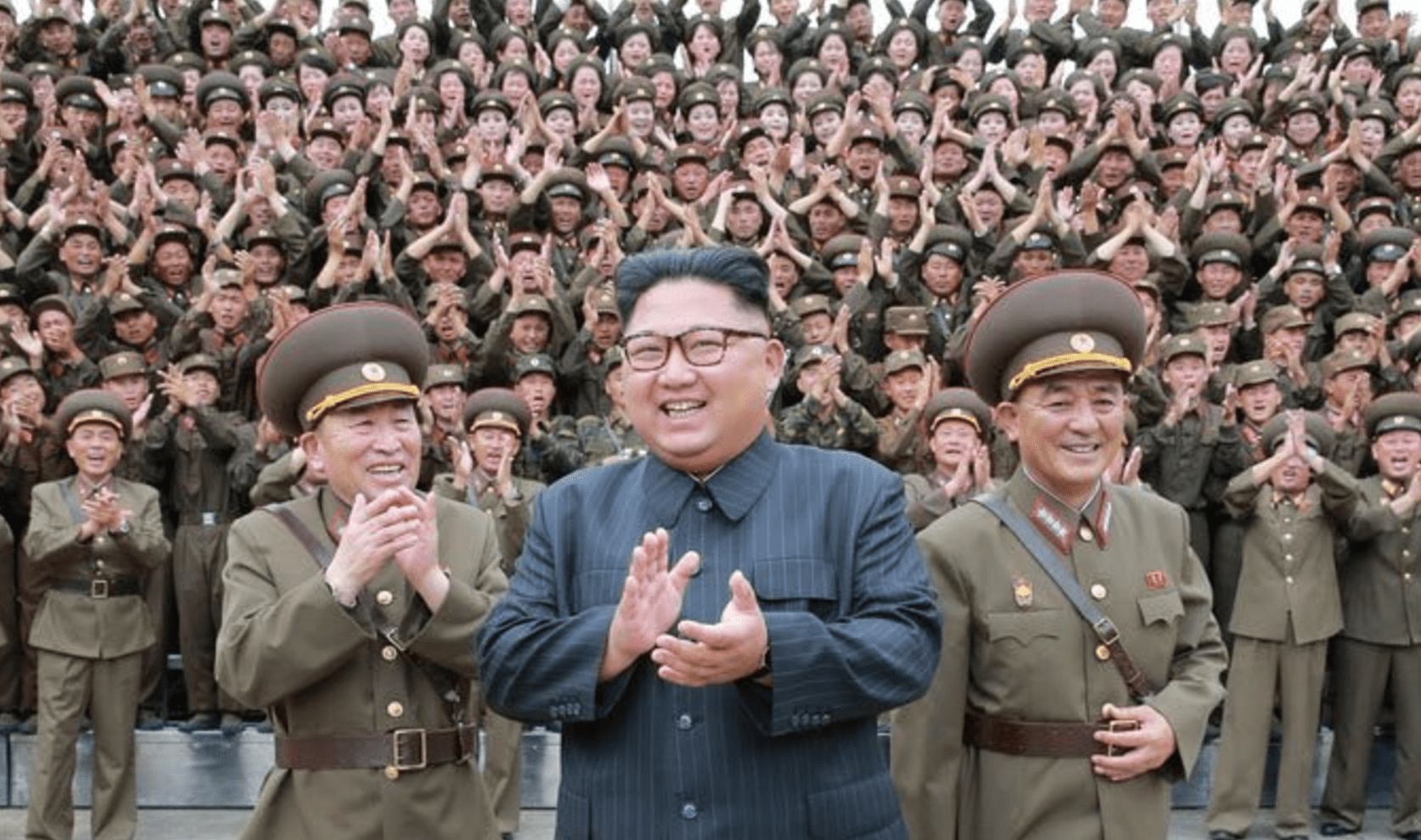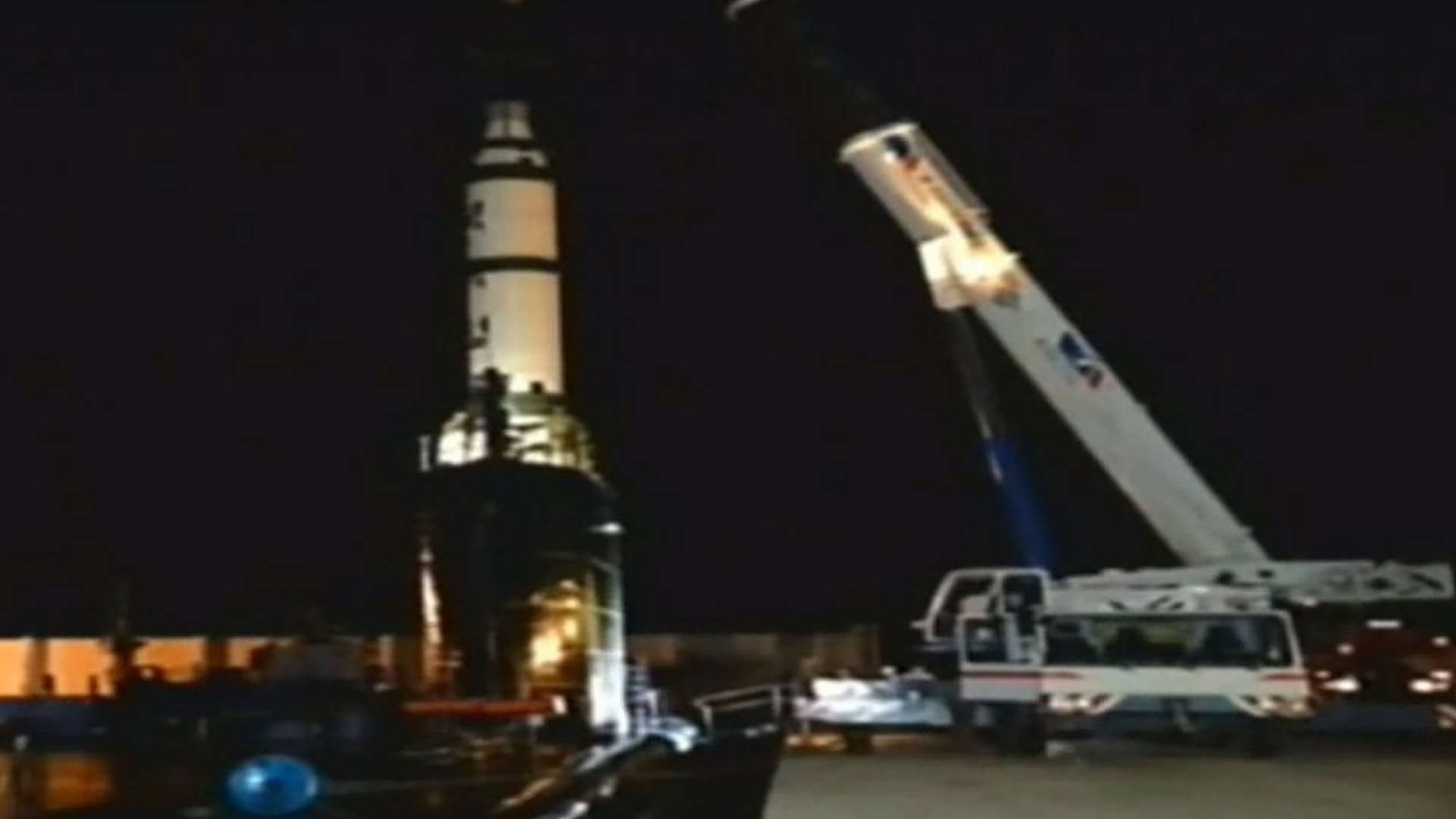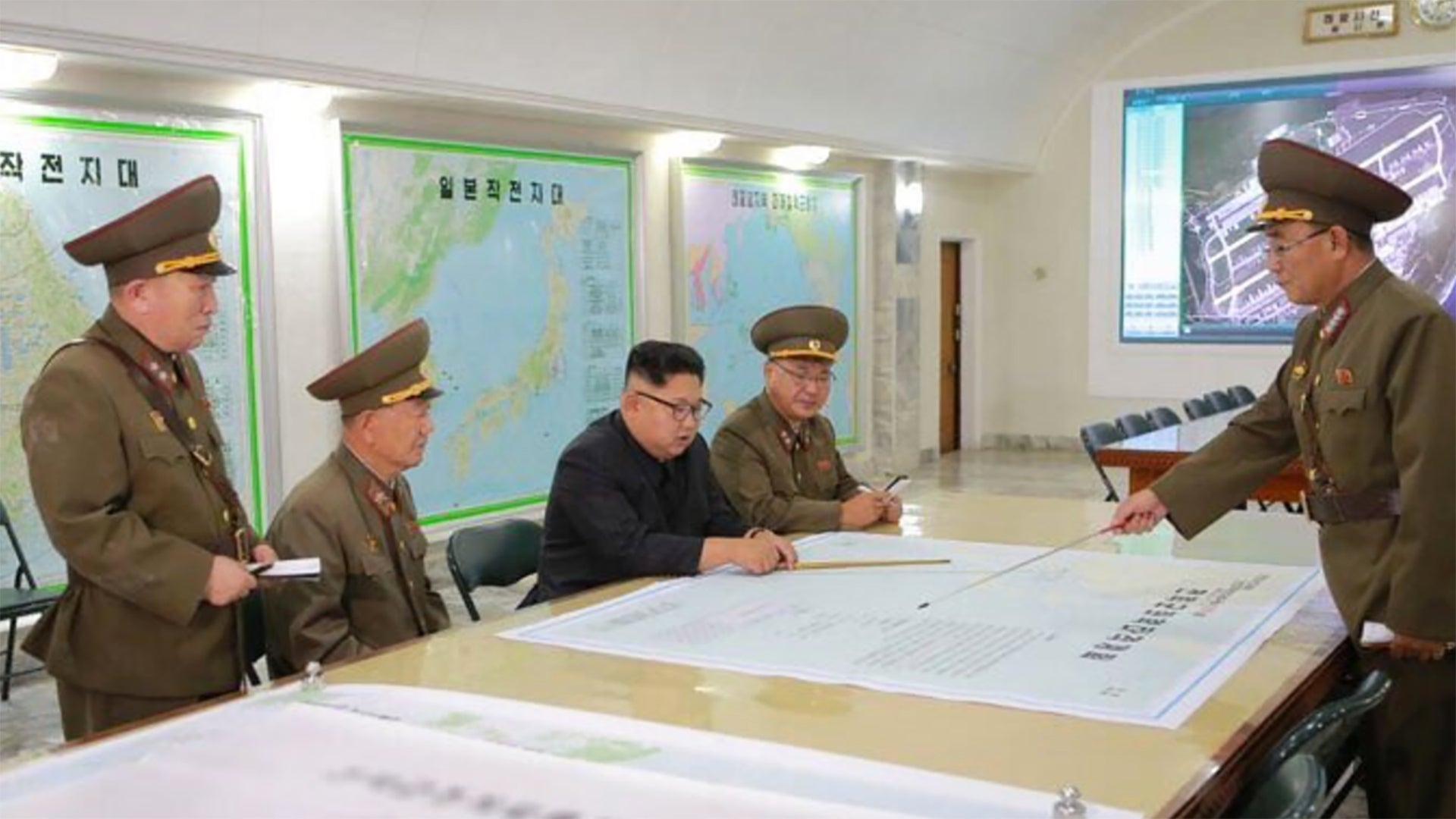Tensions continue to simmer on the Korean Peninsula after a series of messages were released by both North Korea and the US in recent hours. Now there is talk that US satellites have picked up movement of launchers capable of firing Hwasong-12 intermediate range ballistic missiles, which could indicate a coming launch. These are the same missiles North Korea said it was planning to launch towards Guam as a show of force in response to Donald Trump’s “fire and fury” comments made last week. In addition, the image above was released that shows Kim Jong Un pouring over targeting maps with his generals, with Andersen AFB—America’s sprawling master air base on Guam—projected on a large screen nearby.
The photos were supposedly taken in the command post of North Korea’s Strategic Forces while Kim visited the installation. Another image in the series shows a large map with a flight path that connects North Korea’s eastern shore—possibly near the port city of Sinpo—to Guam.

The images show that the North Koreans are doing exactly as they said they would—putting together a plan to fire four Hwasong-12 missiles at waters located a couple dozen miles from the island of Guam as a display of their capabilities. Days ago, General Kim Rak Gyom’s stated that he would finish the plan and brief Kim Jong Un on it personally in the mid August timeframe. The “Young General” would then make the call to go ahead with it or not. This briefing has now come and gone.
Kim’s visit to the headquarters of North Korea’s Strategic Forces, these photos, and word that the same type of missiles that were supposedly to be used for the plan are being moved are concerning to say the least. Yet for now it looks like Kim plans on holding off with the launch, with an official statement reading in part:
“He said he said that the U.S imperialists caught the noose around their necks due to their reckless military confrontation racket, adding that he would watch a little more the foolish and stupid conduct of the Yankees spending a hard time of minute of their miserable lot. He said he wants to advise the U.S. which is driving the situation on the Korean Peninsula into a the touch-and-go situation, running helter skelter, to take into full account gains and losses with clear head whether prevailing situation is more unfavorable for any party.
In order to defuse the tensions and prevent dangerous military conflict on the Korean Peninsula, it is necessary for the U.S. to make proper option first and show it through with action, as it committed provocations after introducing strategic equipment into the vicinity of the Peninsula, he said, adding that the U.S. should stop at once arrogant provocations against the DPRK and unilateral demands and not provoke it any longer.

Not only does this statement declare that Kim is in “wait and see mode,” but it also seems to mention the need for the US to give the North Koreans an “option,” which likely means a way to deescalate that is agreeable to both sides. One of my biggest criticisms of the Trump Administration’s handling of the North Korea situation is that they offer no solution to the crisis aside from war or total capitulation by Pyongyang. This includes giving up all their nuclear weapons and missile systems—a totally unrealistic demand. Yet the North Koreans seem to be indicating they would be interested in some sort of compromise or pathway out of the current standoff. Considering the stakes involved, and they are only growing more dire with every moment, this is worth exploring.
North Korea wasn’t the only sending strong messages today. Defense Secretary Mattis has come up with another intense warning for North Korea, although it is one that leaves some ambiguity and flexibility, stating:
“If they shoot at the United States, I’m assuming they hit the United States, then it’s game on… It could escalate into war very quickly… yes, that’s called war, if they shoot at us.”
His statement gives some room for flexibility when it comes to responding to a threatening test launch by North Korea, where they fire missiles towards Guam, but not impacting the island itself.
Chairman of the Joint Chiefs of Staff General Joseph Dunford, who is in South Korea on a military and diplomatic mission, made it clear today that it is up to the President as to how the US would respond to a launch towards Guam or any major escalation by North Korea:
We’ll have to wait and see how this all plays out, but it is likely that North Korea will test a missile in the near term, even if it does not follow a trajectory towards Guam. Beyond reports of Hwasong-12 missiles being moved, there has been substantial activity observed around North Korea’s submarine base in Sinpo, where their submarine launched ballistic missile (SLBM) program is based.
A test launch of an enhanced solid-fueled KN-11 “Polaris” missile, which is closely related to the road-mobile KN-15, aboard the country’s sole Sinpo/Gorae class submarine would definitely rattle nerves in South Korea. The type could theoretically be launched outside of the Terminal High Altitude Area Defense (THAAD) missile defense system’s engagement envelope. Currently a single THAAD battery is located in the south-central region of South Korea.
The establishment and expansion of North Korea’s SLBM program would also make regional powers, like Japan, work much harder to monitor for potential launches over a much larger area of the planet’s surface. Creating a persistent missile defense network capable of protecting all of Japan’s major population centers from an SLBM attack would also be far more costly than just defending against missiles launched from the North Korean mainland alone.

For South Korea, keeping tabs on all of North Korea’s aging submarine force is already nearly an impossible job. Having to continuously track and monitor their missile boats, should North Korea deploy such a force operationally, would push South Korea’s maritime patrol and anti-submarine capabilities past its breaking point.
Finally, there seems to be a growing consensus that key areas of North Korea’s missile technology have been obtained through foreign sources, namely via a company based in Ukraine, although the Ukrainian government denies the allegation and says Russia is to blame.
You can read the full report detailing North Korea’s use of what appears to be a derivative of the Soviet-era RD-250 rocket engine here. If these allegations are indeed accurate, they would help explain how the country has made such massive technological leaps when it comes to their IRBM and ICBM missile programs in recent months.
Contact the author: Tyler@thedrive.com
